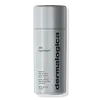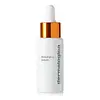What's inside
What's inside
 Key Ingredients
Key Ingredients

 Benefits
Benefits

 Concerns
Concerns

 Ingredients Side-by-side
Ingredients Side-by-side

Microcrystalline Cellulose
AbsorbentSodium Bicarbonate
AbrasiveSodium Cocoyl Glutamate
CleansingSodium Myristoyl Glutamate
CleansingMalic Acid
BufferingSodium Methyl Cocoyl Taurate
CleansingCharcoal Powder
AbrasiveVinyl Dimethicone/Methicone Silsesquioxane Crosspolymer
Maltodextrin
AbsorbentSilica
AbrasiveMagnesium Oxide
AbsorbentOryza Sativa Bran Extract
Skin ConditioningPolymethylsilsesquioxane
Sapindus Trifoliatus Fruit Extract
Skin ConditioningNiacinamide
SmoothingCitrus Aurantium Amara Peel Oil
Skin ConditioningZingiber Officinale Root Extract
MaskingLavandula Angustifolia Oil
MaskingLavandula Hybrida Oil
EmollientCamellia Sinensis Leaf
PerfumingKappaphycus Alvarezii Extract
Skin ConditioningCaesalpinia Spinosa Fruit Pod Extract
Citrus Limon Peel Oil
MaskingRosmarinus Officinalis Leaf Oil
MaskingSalvia Officinalis Oil
MaskingSubtilisin
Skin ConditioningLipase
Skin ConditioningPapain
Skin ConditioningLactic Acid
BufferingOryza Sativa Starch
AbsorbentSodium Chloride
MaskingSodium Dehydroacetate
PreservativeXanthan Gum
EmulsifyingWater
Skin ConditioningCoconut Acid
CleansingCalcium Lactate
AstringentCapryloyl Glycine
CleansingUndecylenoyl Glycine
CleansingCetrimonium Chloride
AntimicrobialLimonene
PerfumingLinalool
PerfumingMicrocrystalline Cellulose, Sodium Bicarbonate, Sodium Cocoyl Glutamate, Sodium Myristoyl Glutamate, Malic Acid, Sodium Methyl Cocoyl Taurate, Charcoal Powder, Vinyl Dimethicone/Methicone Silsesquioxane Crosspolymer, Maltodextrin, Silica, Magnesium Oxide, Oryza Sativa Bran Extract, Polymethylsilsesquioxane, Sapindus Trifoliatus Fruit Extract, Niacinamide, Citrus Aurantium Amara Peel Oil, Zingiber Officinale Root Extract, Lavandula Angustifolia Oil, Lavandula Hybrida Oil, Camellia Sinensis Leaf, Kappaphycus Alvarezii Extract, Caesalpinia Spinosa Fruit Pod Extract, Citrus Limon Peel Oil, Rosmarinus Officinalis Leaf Oil, Salvia Officinalis Oil, Subtilisin, Lipase, Papain, Lactic Acid, Oryza Sativa Starch, Sodium Chloride, Sodium Dehydroacetate, Xanthan Gum, Water, Coconut Acid, Calcium Lactate, Capryloyl Glycine, Undecylenoyl Glycine, Cetrimonium Chloride, Limonene, Linalool
Water
Skin ConditioningGlycerin
HumectantButylene Glycol
HumectantEthoxydiglycol
HumectantLactic Acid
BufferingSalvia Hispanica Seed Extract
EmollientSodium PCA
HumectantPalmitoyl Tripeptide-5
Skin ConditioningSophora Japonica Flower Extract
Skin ProtectingAscorbyl Methylsilanol Pectinate
AntioxidantSodium Hyaluronate
HumectantTocopherol
AntioxidantDipotassium Glycyrrhizate
HumectantAminopropyl Ascorbyl Phosphate
AntioxidantTrehalose
HumectantPolyacrylate-13
Propanediol
SolventCitrus Grandis Peel Oil
MaskingHelianthus Annuus Seed Oil
EmollientPolyisobutene
Methylpropanediol
SolventCarrageenan
Pentylene Glycol
Skin ConditioningGlyceryl Polyacrylate
Caprylyl Glycol
EmollientEthylhexylglycerin
Skin ConditioningTetrasodium Glutamate Diacetate
Xanthan Gum
EmulsifyingPolysorbate 20
EmulsifyingLimonene
PerfumingSodium Hydroxide
BufferingPhenoxyethanol
PreservativeWater, Glycerin, Butylene Glycol, Ethoxydiglycol, Lactic Acid, Salvia Hispanica Seed Extract, Sodium PCA, Palmitoyl Tripeptide-5, Sophora Japonica Flower Extract, Ascorbyl Methylsilanol Pectinate, Sodium Hyaluronate, Tocopherol, Dipotassium Glycyrrhizate, Aminopropyl Ascorbyl Phosphate, Trehalose, Polyacrylate-13, Propanediol, Citrus Grandis Peel Oil, Helianthus Annuus Seed Oil, Polyisobutene, Methylpropanediol, Carrageenan, Pentylene Glycol, Glyceryl Polyacrylate, Caprylyl Glycol, Ethylhexylglycerin, Tetrasodium Glutamate Diacetate, Xanthan Gum, Polysorbate 20, Limonene, Sodium Hydroxide, Phenoxyethanol
 Reviews
Reviews

Alternatives
Ingredients Explained
These ingredients are found in both products.
Ingredients higher up in an ingredient list are typically present in a larger amount.
Lactic Acid is another well-loved alpha hydroxy acid (AHA). It is gentler than glycolic acid but still highly effective.
Its main role is to exfoliate the surface of the skin by loosening the “glue” that holds dead skin cells together. Shedding those old cells leads to smoother, softer, and more even-toned skin.
Because lactic acid molecules are larger than glycolic acid, they don’t penetrate as deeply. This means they’re less likely to sting or irritate, making it a great choice for beginners or those with sensitive skin.
Like glycolic acid, it can:
Lactic acid also acts as a humectant (like hyaluronic acid). It can draw water into the skin to improve hydration and also plays a role in the skin's natural moisturizing factor (NMF) in the form of sodium lactate.
Studies show it can boost ceramide production to strengthen the skin barrier and even help balance the skin’s microbiome.
To get results, choose products with a pH between 3-4.
Lower strengths (5-12%) focus on surface exfoliation; higher strengths (12% and up) can reach deeper in the dermis (deeper, supportive layer) to improve skin texture and firmness over time.
Though it was originally derived from milk, most modern lactic acid used in skincare is vegan. It is made through non-dairy fermentation to create a bio-identical and stable form suitable for all formulations.
When lactic acid shows up near the end of an ingredient list, it usually means the brand added just a tiny amount to adjust the product’s pH.
Legend has it that Cleopatra used to bathe in sour milk to help reduce wrinkles.
Lactic acid is truly a gentle multitasker: it exfoliates, hydrates, strengthens, and brightens. It's a great ingredient for giving your skin a smooth, glowing, and healthy look without the harshness of stronger acids.
Read more about some other popular AHA's here:
Learn more about Lactic AcidLimonene is a fragrance that adds scent and taste to a formulation.
It's found in the peel oil of citrus fruits and other plants such as lavender and eucalyptus. The scent of limonene is generally described as "sweet citrus".
Limonene acts as an antioxidant, meaning it helps neutralize free radicals.
When exposed to air, oxidized limonene may sensitize the skin. Because of this, limonene is often avoided by people with sensitive skin.
The term 'fragrance' is not regulated in many countries. In many cases, it is up to the brand to define this term. For instance, many brands choose to label themselves as "fragrance-free" because they are not using synthetic fragrances. However, their products may still contain ingredients such as essential oils that are considered a fragrance.
Learn more about LimoneneWater. It's the most common cosmetic ingredient of all. You'll usually see it at the top of ingredient lists, meaning that it makes up the largest part of the product.
So why is it so popular? Water most often acts as a solvent - this means that it helps dissolve other ingredients into the formulation.
You'll also recognize water as that liquid we all need to stay alive. If you see this, drink a glass of water. Stay hydrated!
Learn more about WaterXanthan gum is used as a stabilizer and thickener within cosmetic products. It helps give products a sticky, thick feeling - preventing them from being too runny.
On the technical side of things, xanthan gum is a polysaccharide - a combination consisting of multiple sugar molecules bonded together.
Xanthan gum is a pretty common and great ingredient. It is a natural, non-toxic, non-irritating ingredient that is also commonly used in food products.
Learn more about Xanthan Gum